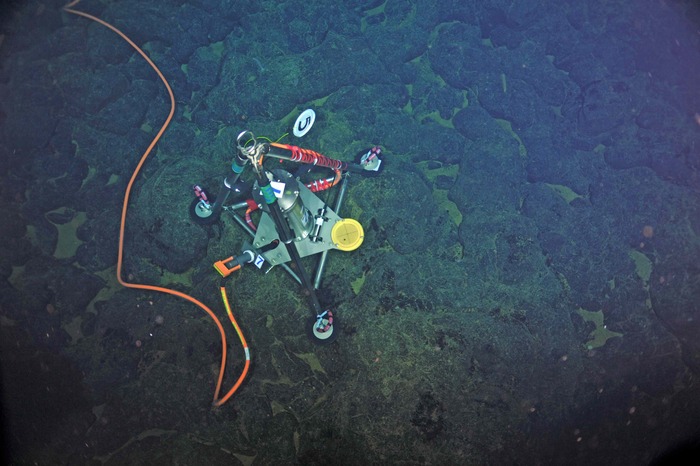Forecasts indicate that the next eruption of Axial Seamount may occur in 2020-2021.
The Bottom Pressure and Tilt platform (BOPT) is a custom built instrument developed by Dr. Bill Chadwick at NOAA PMEL in Newport, Oregon The BOPT measures the inflation and deflation of the seafloor at the summit of Axial Seamount using a precision pressure sensor that enables detection of the seafloor's rise and fall (i.e., "breathing") as magma (molten rock) moves in and out of the underlying magma chamber. A very precise tilt meter, which measures in micro-radians, records the "tilting" of the seafloor as it deforms in response to melt-lava migration.
Bottom pressure tilt instruments are installed at the ASHES hydrothermal vent field as part of a separate NSF award to Chadwick (MJ03B), at the International District 2 Site (MJ03D), at the Eastern Caldera Site (MJ03E), and at the Central Caldera Site (MJ03F).
The pressure sensor is a Paroscientific Digiquartz pressure transducer and the tilt meter is supplied by Applied Geomechanics (LILY).
Live streaming data from these instruments recorded a 2.4 m drop in the seafloor concommitant with >8,000 earthquakes on August 24, 2015 marking the begining to of the Axial eruption that ended with a lava flow >400 ft thick on the northern rift system. Long-term time-series measurements are allowing forcasting with daily updating of when the next eruption will occur. The forcasts along with BOTPT uplift diagrams can be accesed on Bills' NOAA PMEL website. The forecasts are updated daily based on uplift rates and indicate the next eruption may occur in the 2020-2021 time frame.


